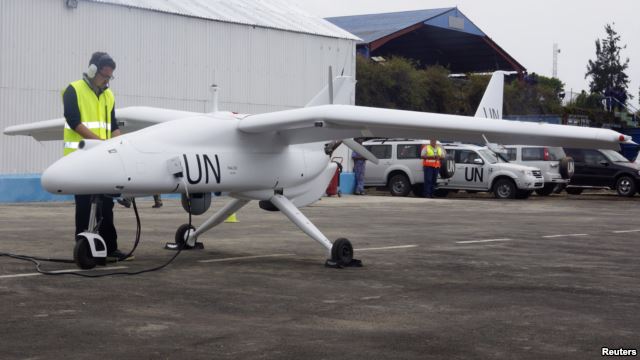Humanitarian actors, faced with ongoing conflict, epidemics, famine and a range of natural disasters, are increasingly being asked to do more with less. The international community’s commitment of resources has not kept pace with their expectations or the growing crises around the world. Some humanitarian organisations are trying to bridge this disparity by adopting new technologies—a practice often referred to as humanitarian innovation. This blog post, building on a recent article in the ICRC Review, asserts that humanitarian innovation is often human experimentation without accountability, which may both cause harm and violate some of humanitarians’ most basic principles.
While many elements of humanitarian action are uncertain, there is a clear difference between using proven approaches to respond in new contexts and using wholly experimental approaches on populations at the height of their vulnerability. This is also not the first generation of humanitarian organisations to test new technologies or approaches in the midst of disaster. Our article draws upon three timely examples of humanitarian innovations, which are expanding into the mainstream of humanitarian practice without clear assessments of potential benefits or harms.
Cargo drones, for one, have been presented as a means to help deliver assistance to places that aid agencies otherwise find difficult, and sometimes impossible, to reach. Biometrics is another example. It is said to speed up cumbersome registration processes, thereby allowing faster access to aid for people in need (who can only receive assistance upon registration). And, in the case of responding to the 2014 outbreak of Ebola in West Africa, data modelling was seen as a way to help in this response. In each of these cases, technologies with great promise were deployed in ways that risked, distorted and/or damaged the relationships between survivors and responders.
These examples illustrate the need for investment in ethics and evidence on the impact of development and application of new technologies in humanitarian response. It is incumbent on humanitarian actors to understand both the opportunities posed by new technologies, as well as the potential harms they may present—not only during the response, but long after the emergency ends. This balance is between, on the one hand, working to identify new and ‘innovative’ ways of addressing some of the challenges that humanitarian actors confront and, on the other hand, the risk of introducing new technological ‘solutions’ in ways that resemble ‘humanitarian experimentation’ (as explained in the article). The latter carries with it the potential for various forms of harm. This risk of harm is not only to those that humanitarian actors are tasked to protect, but also to humanitarian actors themselves, in the form of legal liability, loss of credibility and operational inefficiency. Without open and transparent validation, it is impossible to know whether humanitarian innovations are solutions, or threats themselves. Aid agencies must not only to be extremely attentive to this balance, but also should do their utmost to avoid a harmful outcome.
Framing aid projects as ‘innovative’, rather than ‘experimental’, avoids the explicit acknowledgment that these tools are untested, understating both the risks these approaches may pose, as well as sidestepping the extensive body of laws that regulate human trials. Facing enormous pressure to act and ‘do something’ in view of contemporary humanitarian crisis, a specific logic seems to have gained prominence in the humanitarian community, a logic that conflicts with the risk-taking standards that prevail under normal circumstances. The use of untested approaches in uncertain and challenging humanitarian contexts provokes risks that do not necessarily bolster humanitarian principles. In fact, they may even conflict with the otherwise widely adhered to Do No Harm principle. Failing to test these technologies, or even explicitly acknowledge that they are untested, prior to deployment raises significant questions about both the ethics and evidence requirements implicit in the unique license afforded to humanitarian responders.
In Do No Harm: A Taxonomy of the Challenges of Humanitarian Experimentation, we contextualise humanitarian experimentation—providing a history, examples of current practice, a taxonomy of potential harms and an analysis against the core principles of the humanitarian enterprise.
Kristin Bergtora Sandvik, SJD Harvard Law School, is a Research Professor at the Peace Research Institute Oslo and a Professor of Sociology of Law at the University of Oslo. Her widely published socio-legal research focuses on technology and innovation, forced displacement and the struggle for accountability in humanitarian action. Most recently, Sandvik co-edited UNHCR and the Struggle for Accountability (Routledge, 2016), with Katja Lindskov Jacobsen, and The Good Drone (Routledge, 2017).
Katja Lindskov Jacobsen, PhD International Relations Lancaster University, is a Senior Researcher at Copenhagen University, Department of Political Science, Centre for Military Studies. She is an international authority on the issue of humanitarian biometrics and security dimensions and is the author of The Politics of Humanitarian Technology (Routledge, 2015). Her research has also appeared in Citizenship Studies, Security Dialogue, Journal of Intervention & Statebuilding, and African Security Review, among others.
Sean Martin McDonald, JD/MA American University, is the CEO of FrontlineSMS and a Fellow at Stanford’s Digital Civil Society Lab. He is the author of Ebola: A Big Data Disaster, a legal analysis of the way that humanitarian responders use data during crises. His work focuses on building agency at the intersection of digital spaces, using technology, law and civic trusts.









